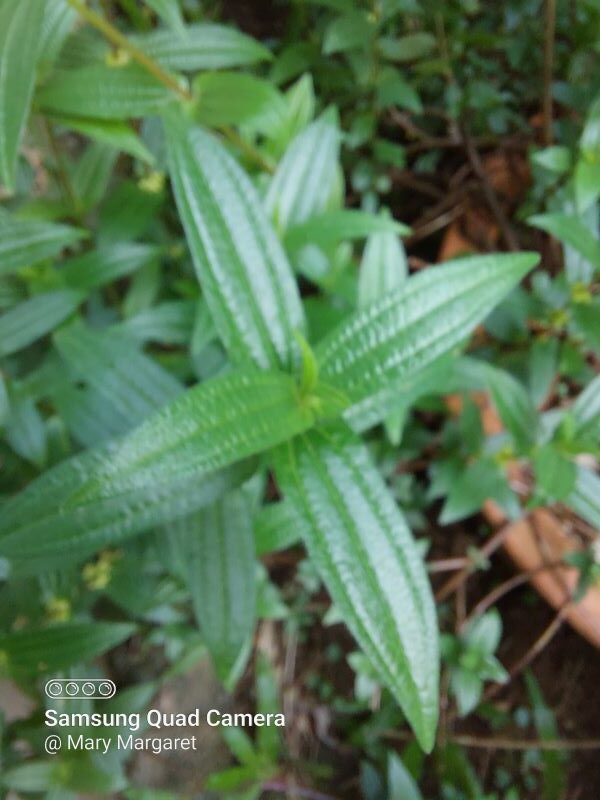
Heritage Snippets of Sarawak
By M M Ann Armstrong
TENGAYAN, a staple vegetable in the highland Lun Bawang village clusters of Long Semado and Ba Kelalan, as well as those in the Kelabit Highlands is little known outside. I was introduced to this delicious vegetable during my first visit to Long Semado. And to use a cliche, I have never looked back.
First taste
Steam wafted off a bowl of tengayan soup-like vegetable porridge (biter in Lun Bawang) tantalising the taste buds. It was delicious. How can one describe tengayan? It is like eating the wild with its fresh natural taste. The forest-green cream biter, which can be slippery, complements the equally tasty highland rice. Hanne Christenesen in Ethnobotany of the Iban & the Kelabit wrote only the young leaves and shoots are picked and cooked. This leads to another question – why?
The family
Tengayan (Hyrtanandra hirta) is a member of the Urticaceae (stinging nettle) family in the order Rosales, with 54 genera and about 2,625 species. Young leaves of stinging nettles are a springtime delicacy in some parts of the world. Christensen in her book listed ten members of this family including tengayan of which eight are used by the Kelabit and two by the Iban. Some are edible, and some are not.
The fruit of Astrothalamus retulatus (kerak idung) and Debregesia longifolia (sypyeh) are edible, while the young leaves and shoot tips of Pouzolzia glomerata (rubai) and Pouzolzia zeylanica (tengayan teloah) may be cooked and eaten like tengayan.
Two species—Dendrocnide oblanceoloata (rupay apui) and Dendrocnide stimulans (rupay apui or rupay siah)—are poisonous and touching the leaves can cause an allergic reaction which can be itchy and painful. The simple opposite leaves of the members of the Urticaceae family have stinging plant hairs (trichomes) which can cause the reaction described above.

Growing tengayan
The small greenish flower, which cluster at the leaf axils on the plant stems, are wind pollinated. Each flower has one carpel and produces one seed called an achene, which is expelled explosively.
In Long Semado, Ba Kelalan or the Kelabit Highlands tengayan grows wild along riverbanks and in moist cool areas. I spoke to several people from Long Semado and Ba Kelalan who said that they have domesticated the plant and grow it close to their homes in the village or city.
Litad Langub said she planted the tengayan close to her home in Long Semado and also in in Miri. Felicity Ripka, also from Long Semado, said she grows tengayan in pots. And in Kuching I also grow tengayan in pots. Litad and Felicity indicated that moisture was key and that the tengayan has to be kept wet. In my experience, sunlight is also important. The tengayan under moist conditions with almost full sunlight flourishes in my garden.
Tengayan can also be grown via cuttings as it roots from the leaf axils—vegative propogation simplifies the growing process. Lua Langub, from Long Tuma, Lawas, just pushes the cutting into the moist soil, and they grow. I have a slightly different technique as I gently loop the cuttings into a circle and bury them under a loose layer of soil. I take particular care to ensure that the leaf axils are buried. Like Lua, I have had success with growing tengayan outside the village.

Into bowls
Lua said that tengayan is cooked as a soup-like porridge (biter). Litad and Felicity agreed and said that they had never seen it cooked in any other way. I wonder why.
As a member of the nettle family, Urticaceae, the leaves are hairy and boiling the vegetable is possible a technique to deal with this feature of the plant. Or perhaps, it is an easy way of cooking as a lot of types of food are boiled in the highlands.
As mentioned earlier only young leaves and shoots are eaten. First, these are plucked from the plants and washed. Then crinkle them by rubbing the leaves and shoots between your hands. Meanwhile, boil a pot of water and add salt (the amount depends on personal taste). All the informants said that the vegetable has a better flavour when highland salt is used. Then add the crinkled vegetables to the boiling water—stir aggressively while boiling rapidly. This tasty green biter is like a thick liquid that can almost be drunk.

Litad and Felicity said that they do not add other vegetables to the biter as they like the natural flavours. In Kuching, I sometimes add okra or lady’s fingers so that the biter is slippery as it is in the highlands.
There is not much online about tengayan. However, one YouTube video (https://www.youtube.com/watch?v=5BqV1OqyLso) posted by Gracye Lisah showed detailed steps for preparing this underappreciated vegetable. The preparation varies slightly, although it is cooked as a soup/porridge and highland or Bario salt enhances its flavour. However, fried garlic and red shallots, along with chicken stock are added to intensify the flavour.
Eating tengayan
Tengayan, an underappreciated vegetable, is generally available in the highland villages. However, urban Lun Bawang might grow this vegetable so that they enjoy the flavours of the highlands.
M M Ann Armstrong has lived most of her life in Sarawak. She was introduced to the wonderful flavours of tengayan on the first of her many trips to the highlands.
“Heritage Snippets of Sarawak” is a fortnightly column.
— DayakDaily








